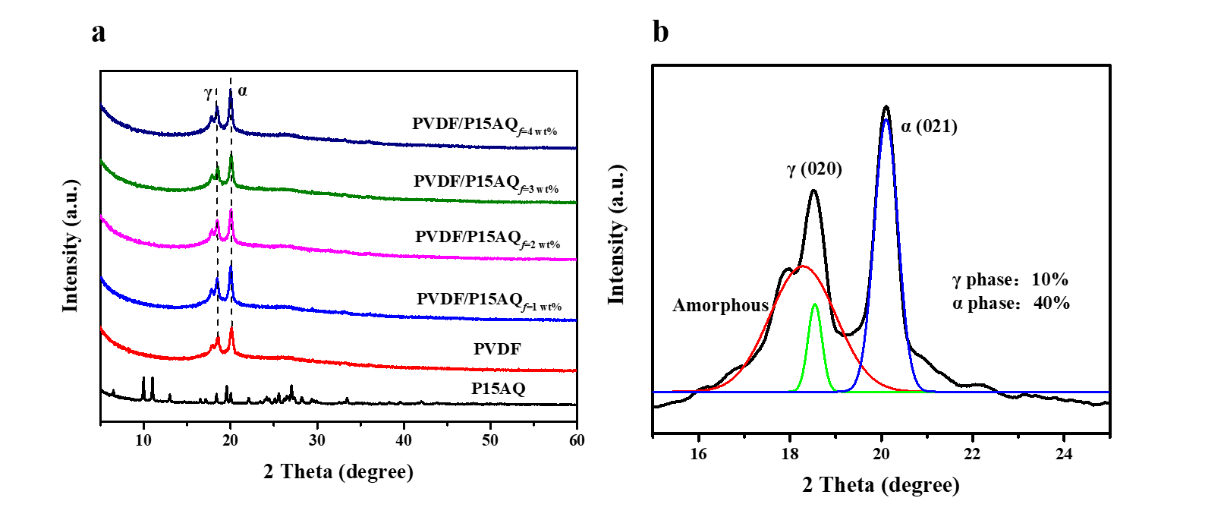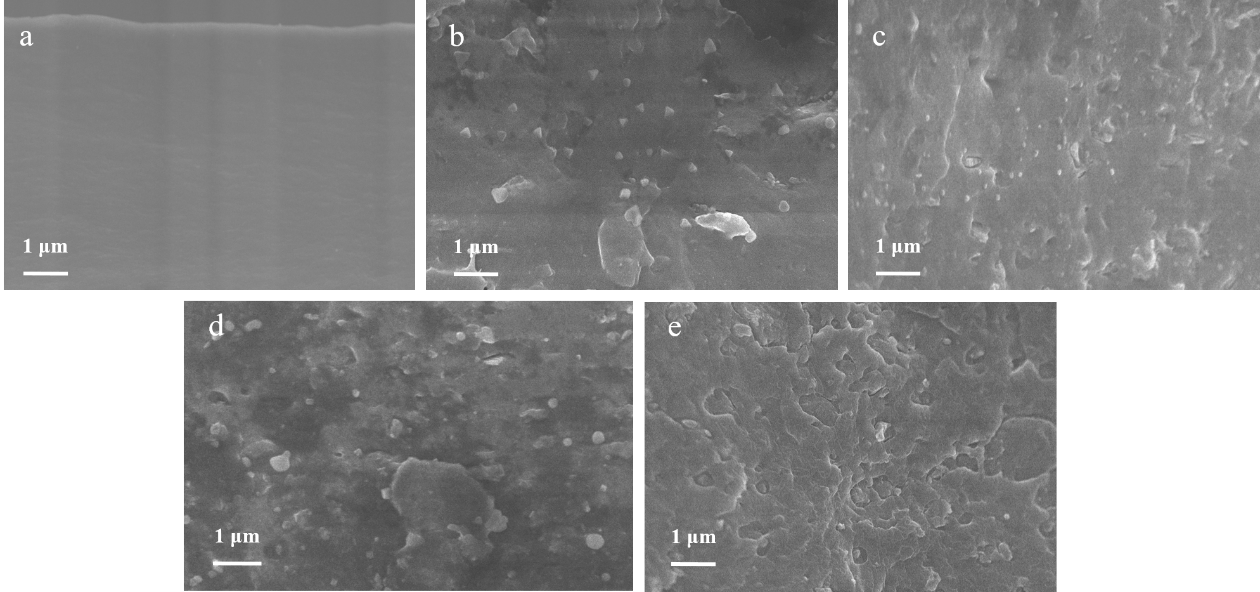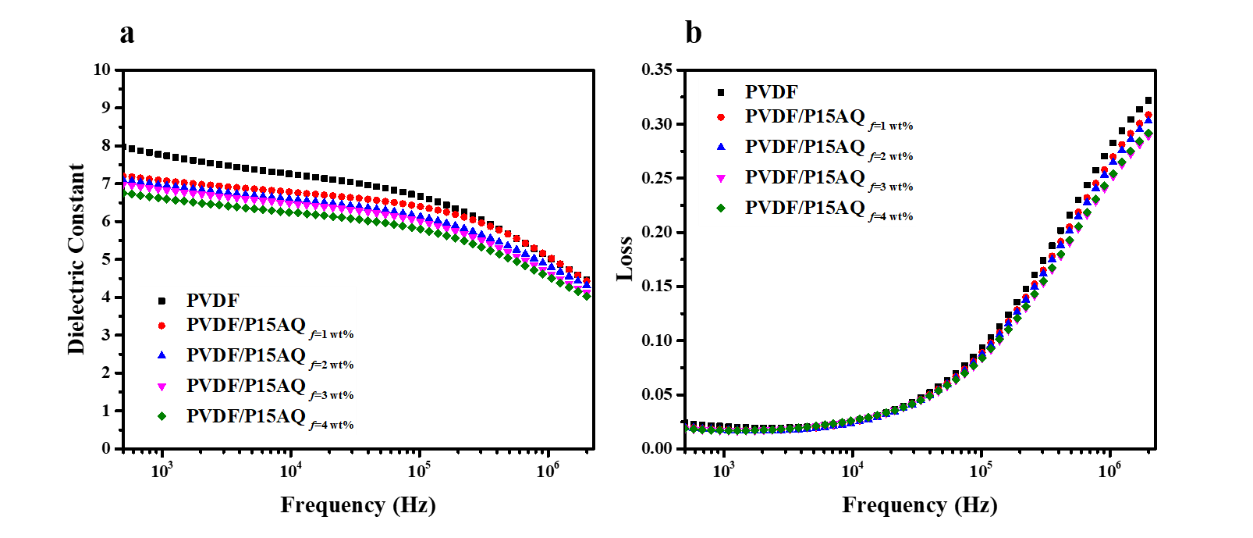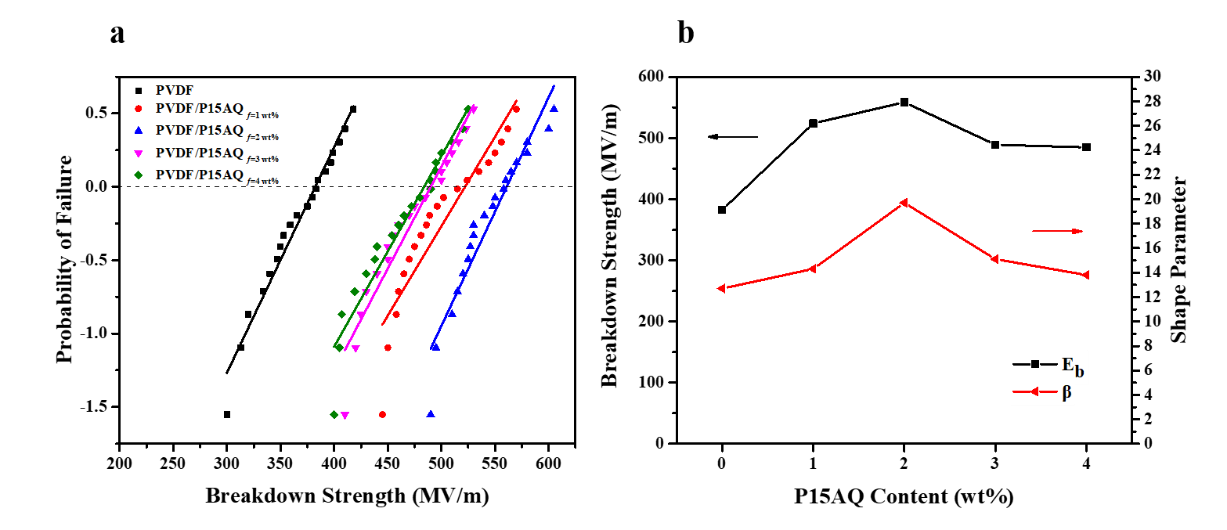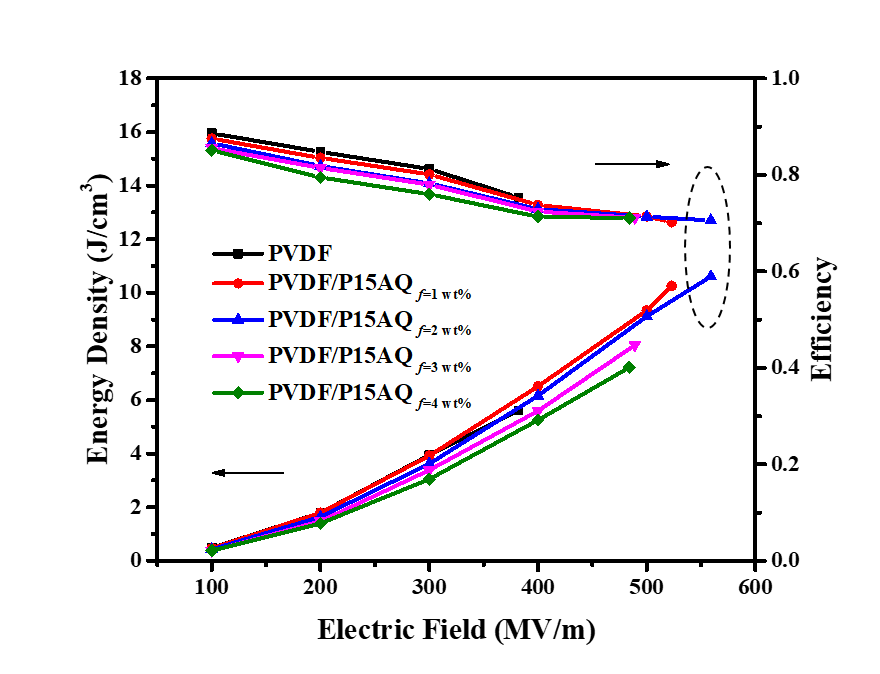聚1,5蒽醌/聚丙烯复合材料的制备与储能研究毕业论文
2021-12-08 21:44:40
论文总字数:21189字
摘 要
随着风能、太阳能等清洁能源的大力发展,相应的储能技术也要随之进步。相较于电池和超级电容器,电介质电容器具有很高的功率密度能够满足高功率高脉冲的电气设备的使用要求,此外它还能解决风力发电输出不稳定的问题,在近年来电介质电容器得到了科研人员的重视。
电介质材料的性能直接影响电介质电容器的储能能力,传统的电介质材料有陶瓷电介质材料和聚合物电介质材料,陶瓷电介质材料的介电常数高但同时其介电损耗也较大,这在一定程度上影响了电容器的储能密度,同时陶瓷电介质材料可加工性和力学性能较差,在电气设备逐渐小型化的趋势下陶瓷电介质材料的应用受到了很大的阻碍。聚合物电介质材料虽然介电常数较小但其具有较高的击穿场强和较低的介电损耗,且其力学性能很好,因此将陶瓷电介质材料与聚合物电介质材料相结合制备无机/有机复合介电材料成为了研究人员的主要研究方向,但这种复合材料也暴露出了界面结合能力差、介电损耗较大、电介质寿命缩短等缺点,因此研究人员又将目光聚集到了全聚合物电介质材料。
本文做出了以聚丙烯(PP)为基体,聚1,5蒽醌为填料,制备聚1,5蒽醌/聚丙烯复合介电材料的预定方案。聚丙烯具有良好的介电性能和优异的力学性能,常用来做为一般的介电材料使用。聚1,5蒽醌是一种半导体材料,将其加入聚丙烯基体中会提高其介电常数由此提升电介质电容器的储能性能,本文旨在探索此方案所制得的电介质材料对于电容器的储能能力的影响。
在实际方案中,本文以PVDF为基体,制备聚1,5蒽醌/PVDF复合介电材料通过对其进行结构表征以及电性能测试来分析该实际方案所得的复合材料的储能性能,并以此实验结果推测出预定方案中复合材料的储能性能。
关键词:介电常数;介电损耗;击穿强度;储能密度
Abstract
With the development of clean energy such as wind energy and solar energy, the corresponding energy storage technology should also be improved. Compared with batteries and supercapacitors, dielectric capacitors have high power density, which can meet the requirements of high power and high pulse electrical equipment. In addition, it can solve the problem of unstable output of wind power generation. In recent years, the incoming dielectric capacitors have attracted the attention of researchers.
The performance of dielectric materials directly affects the energy storage capacity of dielectric capacitors. The traditional dielectric materials are ceramic dielectric materials and polymer dielectric materials. The dielectric constant of ceramic dielectric materials is high, but the dielectric loss is also large, which to some extent affects the energy storage density of capacitors. At the same time, the machinability and mechanical properties of ceramic dielectric materials are poor Under the trend of miniaturization of electrical equipment, the application of ceramic dielectric materials has been greatly hindered. Although the dielectric constant of polymer dielectric material is small, it has high breakdown field strength and low dielectric loss, and its mechanical properties are very good. Therefore, the combination of ceramic dielectric material and polymer dielectric material to prepare inorganic / organic composite dielectric material has become the main research direction of researchers, but the composite material also exposes the poor compatibility between the two phases Because of the disadvantages of large loss and short dielectric life, researchers have focused on all organic dielectric composites.
In this paper, poly (1,5-dichloroanthraquinone) was prepared by adding poly (1,5-dichloroanthraquinone) into polypropylene (PP). PP has good dielectric properties and excellent mechanical properties. It is often used as a general dielectric material. Poly (1,5-dichloroanthraquinone) is a conductive polymer. Adding it to PP will improve its dielectric properties The dielectric constant improves the energy storage performance of the capacitor. The purpose of this paper is to explore the influence of the dielectric material made by this scheme on the energy storage capacity of the capacitor.
In the practical scheme, PVDF is used as the matrix to prepare poly (1,5-anthraquinone) / PVDF composite dielectric materials. Through the structural characterization and electrical performance test, the energy storage performance of the composite obtained from the practical scheme is analyzed. Based on the experimental results, the energy storage performance of the composite in the predetermined scheme is inferred.
Keywords: Dielectric constant; Dielectric loss; Breakdown strength; Energy storage density
目 录
摘要 I
Abstract II
第1章 绪论 1
1.1 引言 1
1.2 电介质材料的物理基础 1
1.2.1 电介质材料的储能原理 2
1.2.2 电介质材料的性质 2
1.2.2.1 介电常数 2
1.2.2.2 击穿场强 3
1.2.2.3 介电损耗 3
1.3 电介质材料的分类 4
1.3.1 陶瓷基电介质 4
1.3.1.1 线性陶瓷电介质 4
1.3.1.2铁电体陶瓷电介质 4
1.3.1.3 反铁电体陶瓷电介质 4
1.3.2聚合物基电介质 5
1.4聚合物基电介质材料的研究进展 5
1.4.1 陶瓷-聚合物复合电介质材料 5
1.4.2导电体-聚合物复合电介质材料 6
1.4.3全有机复合电介质材料 6
1.5聚蒽醌材料的研究进展 7
1.6本论文的研究目的和意义 7
第2章实验方法及测试技术 8
2.1实验药品 8
2.2实验仪器 8
2.3实验步骤 8
2.4测试方法 9
第3章结果与讨论 10
3.1 P15AQ结构分析 10
3.2 PVDF/P15AQ复合介电薄膜的晶型分析 11
3.3 PVDF/P15AQ复合介电薄膜的断面结构分析 12
3.4 PVDF/P15AQ复合介电薄膜的介电性能分析 12
3.5 PVDF/P15AQ复合介电薄膜的击穿性能分析 13
3.6 PVDF/P15AQ复合介电薄膜的储能性能分析 13
第4章 可行性报告 15
参考文献 17
致 谢 19
第1章 绪论
1.1引言
能源问题是事关人类生存的决定性问题,目前我们主要所使用的依旧是不可再生且会造成一定环境问题的化石燃料。人们一直在寻找可以替代化石燃料的清洁的可再生能源如:核能、风能、太阳能[1-2]。各国科研人员一方面在可再生能源的研究上投入了大量精力,另一方面他们对于能源的储存问题也给予了重视。
当前储能器件主要分为电池、超级电容器和电介质电容器这三种。其中,电介质电容器具有最高的功率密度但其储能密度较低[3-4]。在民用方面电介质电容器可以凭借其自身特点来解决风力发电中存在的间歇性问题从而保证电力的稳定输出,同时电气设备的小型化和高度集成化也对储能装置提出了很高的要求,而电介质电容器的发展无疑为解决这一问题提供了可行性方法。在军用方面,目前热门的电磁炮、激光炮等尖端武器需要能够产生高脉冲的储能电源,而电介质电容器具有能产生高脉冲电压和电流的能力,因此研究具有高储能密度的电介质电容器具有很高的应用价值[5-7]。
电介质电容器由两个电极与电极之间的电介质层组合而成,电介质是不导电的。对于电介质电容器而言,其电介质材料对其储能密度及介电损耗的大小具有决定性作用。在外加电场的作用下,电介质材料会由于电子极化和界面极化等现象的综合作用使得正负电荷重心不重合或偶极子发生取向进而达到储存电能的目的[8-9]。传统电介质储能材料有陶瓷电介质储能材料和聚合物电介质储能材料。 常见的陶瓷电介质储能材料有钛酸钡、钛酸锶等[10-11]。相较于有机电介质材料,无机电介质材料虽然介电常数较高但其介电损耗较大,可加工性相较于有机材料较差。常见的聚合物电介质储能材料有聚偏二氟乙烯(PVDF),聚丙烯(PP)[12]等。聚合物电介质储能材料一般都具有较高的击穿场强,其可加工性也要高于陶瓷电介质材料。随着电气设备的轻量化、小型化、柔性化的发展趋势,聚合物电介质材料以其良好的柔韧性和较小的密度而受到了研究人员的重视,但聚合物电介质材料的介电常数较低不利于电容器储能能力的提升,故对于电介质材料的研究越来越趋向于以无机材料作为填料,有机材料作为基体以合成聚合物基复合电介质材料。简单的无机/有机二元复合电介质材料存在界面结合能力差和介电损耗较高等问题,近年来随着相关研究的进展,科研人员制得了具有较高能量密度的聚合物,如Qiming Zhang等人将CTFE、HFP等均聚物交联或共混以此使得PVDF的介电常数、击穿场强(gt;500MV/m)和能量密度(gt;20J/cm3)均得到了提高[13]。
1.2 电介质材料的物理基础
请支付后下载全文,论文总字数:21189字
相关图片展示:
